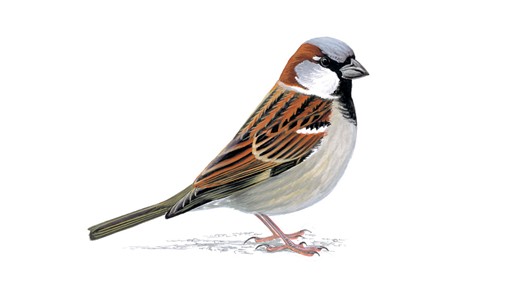 |
Image of a House sparrow - adult male. © The Royal Society for the Protection of Birds, 2013. |
AuthorDr Lorna Shaw |
Date2009 |
Project TypePhD |
SubjectBiology |
DatasetsOS boundary line data, National grids, and OS Meridian Sources: Digimap Dates/Editions: All available. Scales: All available. |
Related SubjectsBiosciences; Ecology; Conservation |
Key WordsOrnithology |
|
Publishing Institution |
|
SummaryThe House Sparrow (Passer domesticus) is a common and widespread species, and is one of the most well known birds to visit gardens in the UK. The species is particularly adapted to living alongside human habitation, and it is estimated that two thirds of the UK house sparrow population is found in urban areas. However, house sparrow populations have been declining in many urban areas since the mid 1980s. The overall population of house sparrows is estimated to have declined from approximately 13 million pairs in the early 1970s to around 6 million pairs by the late 1990s. The house sparrow is now red listed as a species of conservation concern in the UK, and as a species of European conservation concern. |
|
Aims & ObjectivesFrom the PhD thesis abstract: This thesis investigates urban habitat quality in relation to an urban specialist species, the House Sparrow Passer domesticus. After considering the importance of urban habitats for biodiversity in general, I review the current status and distribution of the house sparrow in urban areas, with particular reference to the possibility that human socioeconomic status has influenced the decline of the species in some urban areas. I then consider which features of urban houses and gardens may provide a potential explanation for inter-city variation in habitat quality for urban birds. I present evidence that the age of houses; the prevalence of roof repairs; and the presence of extensive paved areas such as driveways are linked to areas with low levels of socioeconomic deprivation. I then use nationwide data to establish that house sparrows in English cities are more likely to occur in areas that are relatively deprived. |
|
MethodologyDigimap data is being used in GIS to identify suitable sites for analysis within UK urban boundaries, and to overlay data that I have collected, and BTO data to visually compare the distribution of urban house sparrows with socioeconomic data gathered according to UK administrative boundaries. |
|
Results/OutcomeFrom the PhD thesis abstract: Analysis of land use data confirms that house sparrow occurrence decreases with increasing levels of building and paving, and increases with the area of green space available. However, house sparrow occurrence also appears to decrease with increasing garden area, a surprising finding given that gardens are important foraging habitats for urban birds. By radio tracking house sparrows in urban Bristol, I show that gardens are heavily utilised by house sparrows, but that those with a high proportion of paving are avoided. It appears that changes to areas with low levels of socioeconomic deprivation, notably an increase in paved areas, may have contributed to the urban decline of house sparrows in less deprived parts of English urban areas. These findings are discussed in relation to future urban planning requirements, and the need to mitigate for the detrimental effects of urban development on species of conservation concern. The contribution of large, nationwide datasets to the monitoring of urban habitats, and the implications of these findings for other urban species, including humans, are also highlighted. The full text of this PhD thesis can be downloaded here. |
|
References & AcknowledgementsProject supervisors: Prof. Matthew Evans (University of Exeter at the time of this research); Dr Dan Chamberlain (British Trust for Ornithology).Funding body: NERC-funded "blue skies" CASE studentship, in partnership with the British Trust for Ornithology (BTO). |
|